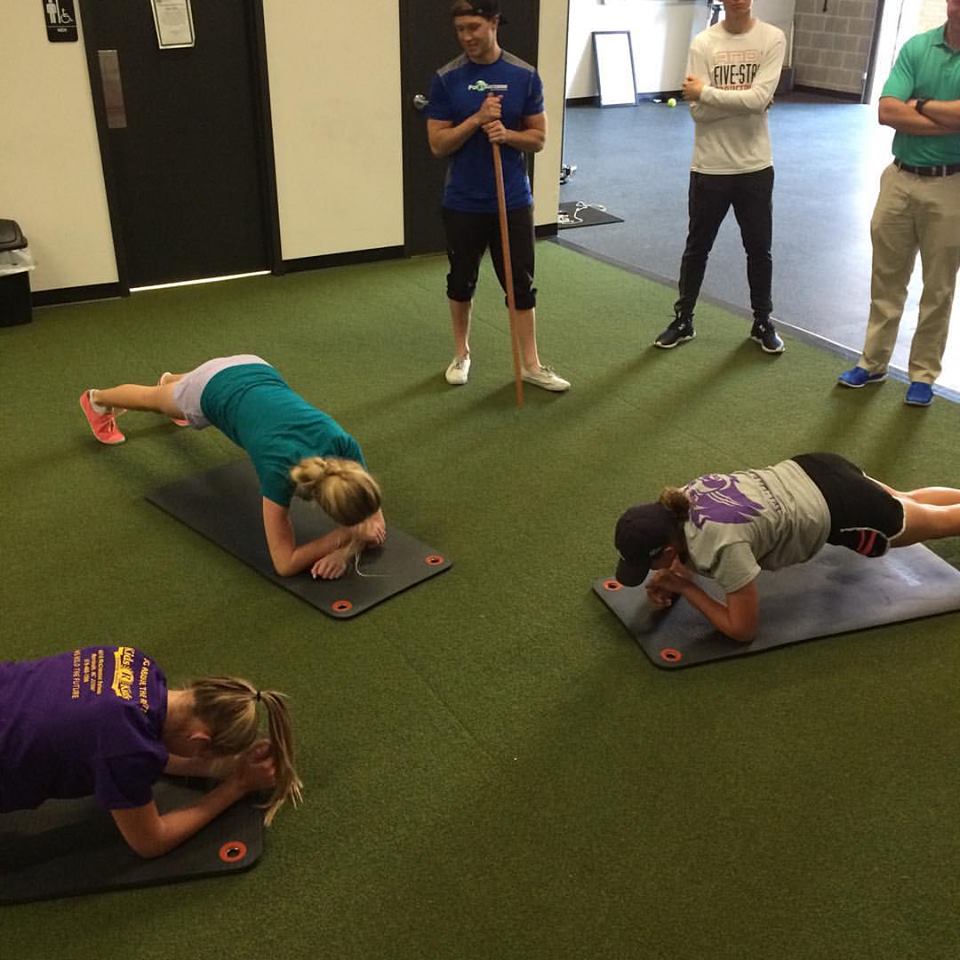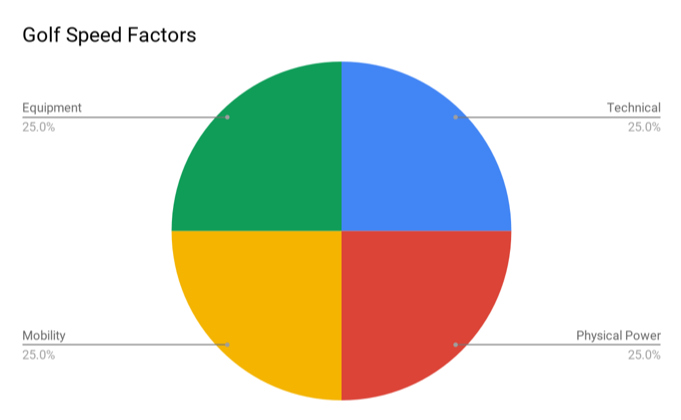How do you know if an online fitness program is any good? What is the difference from one to another? Are there different types of online fitness programs?
Everywhere you look there is a new app or program to train remotely on your own, even programs specific for golf! Technology and the internet have created an ecosystem where you can learn from trainers and coaches on the other side of the planet, it is pretty remarkable.
That being said, there are some distinct differences in the categories of virtual fitness programs out there that every parent and golfer need to be acutely aware of as you assess your options. Basically, you can break them down into 3 categories; stock programs, custom programs, and “betweeners.”
The rest of this article will help to outline the landscape of online training and help you to decide what type might be best for you. We will also discuss safety concerns with each type of training, specifically for junior golfers.
Stock Programs
These programs are the ones that you see for a flat rate that you can buy and have forever. Like workouts from a book prior to them, the new age stock workouts might come with videos, a member log in to track when you complete workouts or even informational areas to read blogs etc.
Whatever the add-ons that may come with them, you need to be able to recognize these stock programs when you see them. They may have levels or categories for juniors or women or seniors etc. But, at the end of the day, each category starts at a predefined point and progresses linearly to a program end without an assessment or check-ins.
There is no assessment at the beginning and you don’t have any human support in the form of a coach to check your form or give you feedback on how to adjust training based on time of year, injuries, growth etc.
These programs are generally priced most appealing because they require little to no work on the part of the creator after it is done. These programs can range from $19 to $99 generally, but of course, there are outliers depending on how many extras they give you that are usually evergreen content (videos, articles etc. that can be used forever).
I would not recommend these types of program for junior golfers. These are, however, a nice option for a seasoned performance trained adult/senior who is looking for a change in their routines.
Pros: Low Cost
Cons: Not customized, No feedback on technique, No adjustments for time of year, development or injuries, Poor accountability (need to be a self-starter), No supervision
“The Betweeners”
This category of program is a hybrid of stock and customization. The creators generally are attempting to give the user an increased user experience through some sort of rating system or difficulty progression algorithm. They might give you a couple updates here and there if you pay for them, but there is not any daily feedback or coaching occurring generally speaking.
These are definitely better than the stock programs as you usually get some sort of interaction with the professional at the start of the program and possibly as the program continues on. You will likely struggle to find consistent human or expert support beyond emails, but it is better than nothing!
A lot of these programs will also provide video libraries that you can filter through based on body areas or goals. If you get lucky, you may even have access to an online video education center. The better ones will have areas for you to track your progress and give you recommendations and education on how to progress.
Your cost for these is usually a tic above the stock programs, generally speaking, but can have a wide range from $40-$300 per month depending on the person you are attempting to work with. The key with this category, and difficult part sometimes, is to tease out a tweener versus a truly customized program versus a stock program. The water can be murky.
If you are paying customized rates (above $80/mo) you should demand that sort of attention and customization. If you are paying stock program rates, you can hope to get lucky but will want to do your due diligence first.
Unfortunately, sometimes the only way to know is to try the program out for a month and see what sort of coaching and support you receive, depending on how easy it is to get someone on the phone prior to purchasing.
Pros: Some customized features, affordability, varying levels of support
Cons: Price can be higher, Deciphering what percent is custom vs stock is difficult, Accountability is limited
Customized Programs
By the title, you can guess what these programs are. A truly customized program will cost you more than the other two groups, and you should get what you pay for.
Prices for customized programs and coaching can run into the $300+ per month range! The price will depend on how much detail you receive, how much face-to-face virtual coaching you experience, and if they deal with nutrition in addition to the training in a customized fashion.
The price range is usually $100-$300/mo depending on what is included, but you should be paying for the expertise of the person behind the program. While the bells and whistles are nice, it is the expertise and ability to adjust for your needs that adds the real value for these programs.
For the price, you should expect HD videos for all exercises and probably as part of an app where you can track progress, completion, weights and wellness metrics. Don’t accept an excel spreadsheet with YouTube links, that would be more of a “betweener” expectation.
You should also expect an initial assessment specific to your goals, as well as monthly formal check-ins via video conferencing at a minimum. You should also be able to have unlimited contact with the coach via text/video messaging for questions and technique assistance between formally scheduled sessions.
You are paying a premium and should expect that type of product to be delivered. Often with this type of virtual training, you will also receive a video lesson course tailored to where you are in your program and your needs.
Customized nutrition coaching and plans should also be expected at this level for the best results.
This would be the ideal virtual program for a Junior Golfer because of the attention to detail so they don’t hurt themselves, but also for the education to help them understand “why” they are doing everything they are. Finally, this high, tough type of a program can reassess them, often to track growth and make adjustments as they develop and hormone levels are changing.
The greatest added value for a program like this for a junior, particularly if they are new to golf fitness, is the ability to instruct them on technique and quality of movement. Attainment of movement competency is the most important skill necessary to progress into the higher levels of performance.
Pros: Coach to talk to at any time, Feedback on Technique, Program adjustable based on developmental and physical changes, Often coordinated with a swing coach, Safest of all three for Juniors, Swing speed and performance gains equitable to in-person training based on latest research in both golf fitness and physical therapy studies
Cons: Price is higher, More time consuming on the front end with assessments and other customizing forms/info
Hopefully, this gives you a clear 10,000-foot view of the virtual golf fitness training landscape. This actually applies across all types of online training so feel free to apply this lens to any online workout program when shopping for what is the best fit for you!
As always, if you have any questions about your golf fitness feel free to reach out to us at Par4Success. We offer complimentary consultation calls as well as visits at any time!
You can read more about us on our website HERE or contact us at 919-377-2084
–Chris Finn
MSPT, CSCS, TPI-MP2, TDN








Leave A Comment